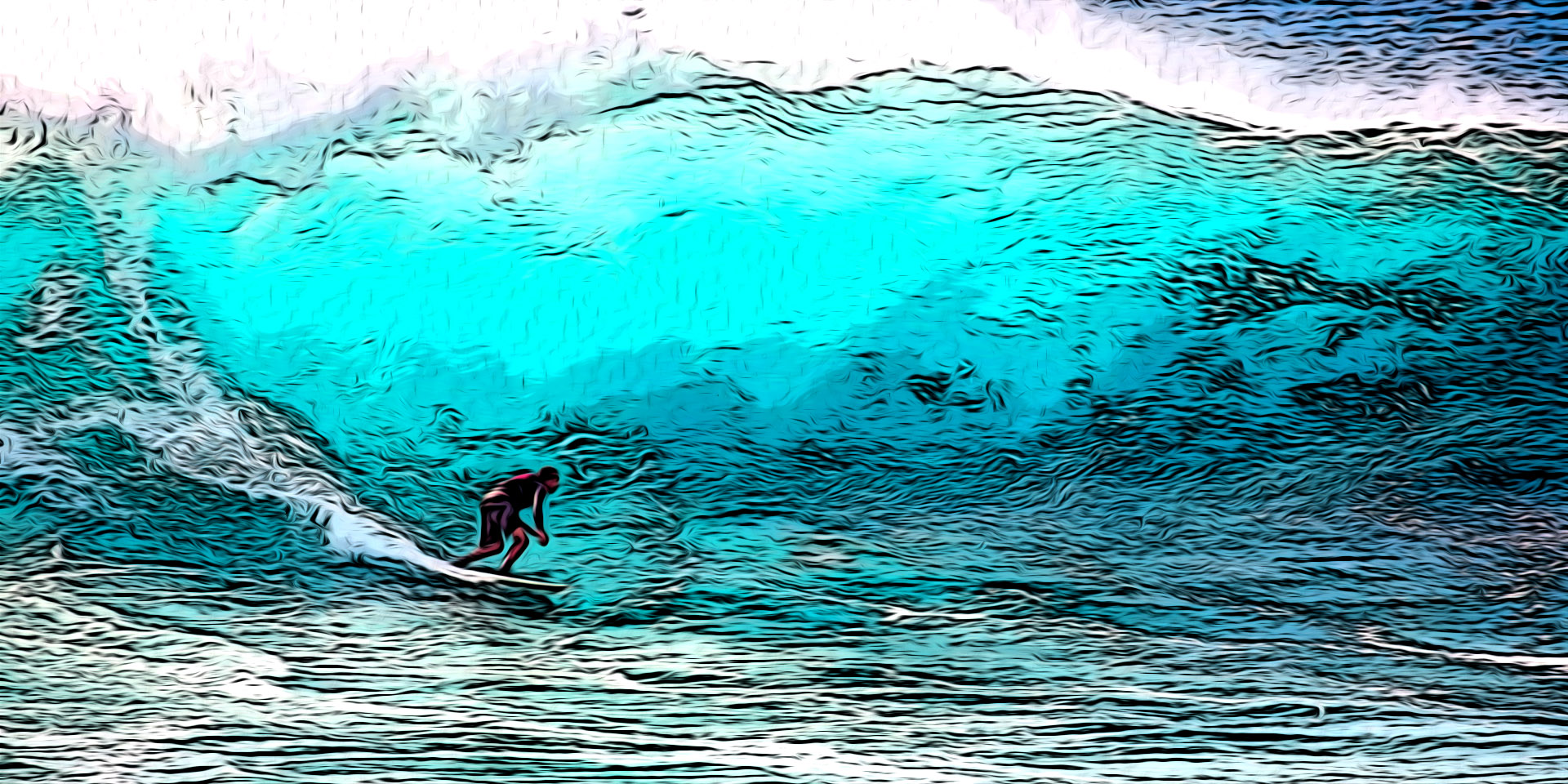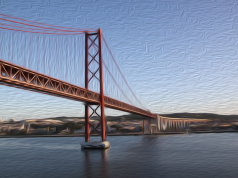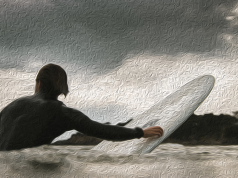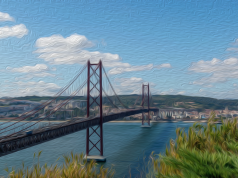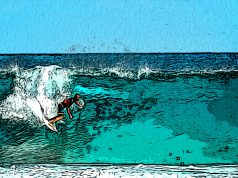In Portugal, the surfing competition started in 1977 at Ribeira d’Ilhas in Ericeira. It later became popular in the 1990s, and since then, it’s been an attraction for many surfers around the world.
With its mild climate, Portugal is one of the top attractions for surfers from both Europe and other parts of the world. The waves and swell sizes range from region to region. So, this makes the country a perfect location for surfers of different levels. It also offers many places giving lessons on how to surf.
Portugal’s geography is an ideal one for surfing due to its containing the north, west, and south swells. In winter, the swell size is about six feet, yet it can reach 15 feet or more. In summer, expect waves are usually between 3-5 feet. Another good side of Portugal as a surf spot is its amazing reef breaks and beach breaks.
As mentioned above, there are a variety of waves and surf locations in Portugal. So, we advise you to do some research about the locations before you arrive there. You may need to make changes to your plan depending on your surfing level and the physical condition of the spot. Portugal gets waves year-round. However, if you’re a beginner, summer can be an ideal time to surf because of the warm water and gentle waves. If you are an intermediate or advanced surfer, then fall and winter can be the optimal periods with the best waves.
Before delving into the best surfing locations, we can say that Ericeira, Peniche, and the Lisbon coast are the most well-known places. Some of the best locations for great waves are the Algarve, Alentejo, and Porto.
When to surf in Portugal
Normally, you can see people surfing throughout the year in Portugal. In the summer, it is quite crowded, and you can see many tourists on the beaches. Still, the waves are better when it’s not summer but cooler. For beginner surfers though, summer is the best time. In summer, the swells are less frequent, and there are no huge waves. Waves are around 3-5 feet at these times. Between the months of June and August, well-known surfing places can get very crowded. They include especially the central coast and the beaches near the capital.
So, what about professional surfers then? Well, we can say that between September and April is the best time for experienced surfers. The reason is that during this period, swells are stronger, as they cause heavy waves of around 6-15 feet. So, clearly, only expert surfers can handle that.
Where to surf in Portugal
Costa Verde (Green Coast)
It is on the northern coast of Portugal and is associated with Porto (Oporto). It is very close to Costa de Prata, and the Spanish region of Galicia. It has good waves, especially in cold winters. The following spots are popular within this area: Cabedelo Beach near Viana do Castelo, Azurara near Vila do Conde, Espinho, Aguçadoura, and Matosinhos. Matosinhos is a suitable location for surfers of all levels. The reason for this is that it has gently sloping sand. Also, there are not many rocks compared to the beaches towards Foz. Also, at the northern end, the harbor wall offers shelter from the wind.
The Costa de Prata (Silver Coast)
This is a very long coastline stretching from north of Ericeira up to the south of Porto at Esmoriz. Some of the most important surf spots are Praia do Norte in Nazaré, Supertubos in Peniche (it is the home of the Moche Rip Curl Pro Portugal), Cortegaça with its regular surf and night surfing festival, and many others around Figueira da Foz and Aveiro.
Ericeira
You must definitely visit this region if you come here for surfing. It is a very small region for surfing. However, it has a high number of first-class surf spots. Ericeira is also the host to the ASP World Tour Surf Championship at Ribeira d’Ilhas beach. If you are an expert surfer, you will admire the spots of Cave, Coxos, and São Lourenço. For beginners and others, Foz do Lizandro, São Julião and Praia do Sul can be the right places to learn surfing or to improve your skills in surfing with their surf schools.
In this region, you can find board factories and repair shops as well. You need to be careful about some issues though. There are many sharp rocks and sea urchins around this area.
Lisbon Coast
It is in the south of Ericeira, located in the capital of the country. Because it is very near to Ericeira, you should also visit this region as well. You can surf here throughout the year. Tagus River and Costa da Caparica are the ideal places for smaller crowds and great beach breaks. Additionally, you can find big beach breaks in the areas of Estoril, Carcavelos, Praia do Guincho, Praia Grande in Sintra, and Praia das Maçás as well. Carcavelos is only 20 minutes away from the Lisbon city center. This region is also known as the birthplace of Portuguese surf. Its water is relatively clean compared to most other city surf breaks. Here, you can enjoy waves in summer and fast beach breaks in winter. It also offers festivals and surf events at the beach, such as WSL Cascais Pro and National Championships.
For more information, please refer to our guide on Surfing in Lisbon.
Alentejo Coast
It is located in the south of Lisbon and north of the Algarve. Alentejo is popular with its delicious wines and cuisine, and idyllic natural qualities. Some well-known places here are namely Odeceixe, Zambujeira do Mar, São Torpes, Arrifana, and Vila Nova de Milfontes. You can also find nice spots along the Vicentine Coast Natural Park, located in both Alentejo and the Algarve.
Algarve Coast
The Algarve region is already a tourist spot in itself. Northern Europeans and the Portuguese are quite interested in this spot as well. For a brighter sun and warmer water, you should definitely head for the Algarve Coast. The west coast can be an option because it gets north-westerly swells. The south coast gets nice waves in the winter as well. So, if you do not like the summer crowds, you can head to Algarve in winter. You can find more than 50 surf spots in this place. Sagres and Lagos are also good options for beach breaks and medium southerly swells. On the west coast with nice waves, you can try the beach towns of Arrifana, Tavira, Monte Clergio, and Carrapateira as well. Also, its water is not cooled by the Canaries’ current.
Azores and Madeira Islands
The Azores region is about 1360 kilometers west of continental Portugal. There are nine islands in this region. One of them is the island of Terceira with many surf spots on its east. The northeast coasts offer well-known breaks. Some of them are Ribeira Grande and Rabo de Peixe. In these places, you will find smaller crowds, but you need to be careful about surfing especially in the winter.
The Madeira region is around 950 kilometers from mainland Portugal. Like the Azores, this is also an autonomous region. There are two populated islands which are the main island of Madeira and Porto Santo. Most of the surfing happens on the main island, especially in the famous spot Paul do Mar.
Beginners and intermediates may try São Vicente on the north coast. For experts, Jardim do Mar, Lugar de Baixo, and Ponta Pequena can be good options.
It is also good to know that the island of Madeira has been host to the ISA World Championships and big wave surfing competitions.
Along with surfing places, these islands are also perfect holiday locations for tourists.
Nazaré
Nazaré is one of the best surf spots in Portugal. It offers really big waves, even one of the biggest and best waves in the world. So, the area is not convenient for beginners, actually. Before it became popular with being a surfing area, it was also popular as a fishing village as well. We can say that it is quite an idyllic village in that sense.
Among many surfers, the world surfing champion Ítalo Ferreira also came to Nazaré for surfing. He surfed in Praia do Norte.
Like most other mentioned regions, Nazaré is also an attraction for tourists because of its location and nature. Many people prefer this place for holidays because of what it offers.
Peniche
Peniche was once an island, but now it is joined to the mainland. One of the best surf spots in Peniche is Supertubos. Supertubos is a famous surf spot in the south of Peniche. Its break offers world-class surfing conditions with its great waves. It has also been home to world championship events since 2009. Toward the north, you will see smaller waves. Especially in late autumn and through the winter, you will see solid swell. Because it is a popular place, you should expect to see big crowds. You should also note that its big wave and larger swells here are not suitable for beginners.
Buarcos
Buarcos is another beach break wave, breaking over a sand and rock bed. It is located in the Figueira da Foz area. Here, surfers live and travel around this area, searching for the best surf waves at the same time. It is also a very popular destination for competitions. Its location is quite favorable because other great spots are very close to this area.
Accommodation for Surfers
Portugal is one of Western Europe’s most affordable countries. So, you’ll not have difficulty finding a cheap place. Note that in the peak season of summer, the accommodation prices are higher. In winter between November and March, they are lower.
You can find various surf camps in Portugal. They offer packages including meals, surf lessons and guiding, transportation, and gear if you don’t have your own. The costs of surf camps vary according to the season, package, and type of room you choose. Alternatively, you can consider boutique hotels and villas as well.
Check out some of the best accommodation deals for surfers in Portugal here.

